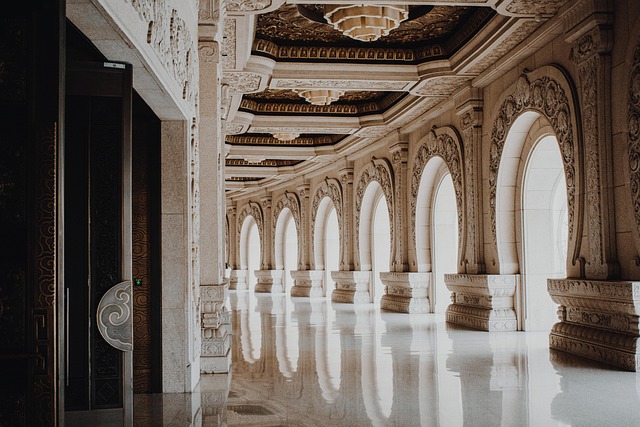When you pick a camera lens, you’re not just choosing a piece of glass; you’re selecting the language in which your images will speak. The right lens can elevate a candid moment into a story, turn a landscape into a portal, and capture the emotion in a portrait with the intimacy of a close‑up. The first step in mastering this art is to align your lens choice with the style you want to achieve, whether it’s moody portraiture, wide‑angle exploration, or high‑speed action. In this guide, we’ll walk through the key variables that shape lens performance, share practical advice for matching your gear to your creative vision, and reveal how subtle optical differences can profoundly influence the final image.
Understanding the Building Blocks of Lens Performance
Every lens is a complex arrangement of glass elements, each designed to manipulate light. Three core attributes—focal length, aperture, and optical coatings—directly affect how your camera records scenes. Mastering these concepts lets you predict how a lens will behave in different shooting styles.
- Focal Length (measured in millimeters): Determines the field of view and the magnification of your subject. Wide‑angle lenses (≤35mm) reveal expansive scenes, while telephoto lenses (≥85mm) compress distance and isolate detail.
- Aperture (f‑number): Controls the amount of light entering the camera and the depth of field. A wide aperture (f/1.8 or lower) offers shallow depth of field, ideal for portraits and low‑light work.
- Optical Coatings: Reduce flare and ghosting, improving contrast and color fidelity. Higher‑quality coatings translate to clearer, more vibrant images.
Focal Length: Crafting Visual Perspective
The focal length of a lens defines how it captures a scene’s perspective. A 24mm lens on a full‑frame camera spreads the scene wide, capturing sweeping vistas, whereas a 200mm lens magnifies distant subjects, making it a favorite for wildlife and sports.
“The way a lens interprets space can be as expressive as the subject itself,” says seasoned photographer Marla Evans.
Aperture and Depth of Field: Painting with Light
Opening the aperture wider allows more light to hit the sensor, which is crucial in low‑light conditions. It also narrows the depth of field, keeping the subject sharp while gently blurring the background. This technique is a staple of portrait style, creating a cinematic feel.
- Large Aperture (f/1.4‑f/2.8): Ideal for portraits and artistic shots where subject isolation is key.
- Medium Aperture (f/4‑f/5.6): Versatile for street and travel photography, balancing light and depth.
- Small Aperture (f/8‑f/16): Perfect for landscape style, ensuring everything from foreground to background remains in focus.
Lens Coatings: The Silent Enhancers of Image Quality
Every glass surface can scatter light, creating unwanted reflections and reducing contrast. Modern lenses employ multi‑layer coatings—such as Nano‑Coat or Super‑Coat—to suppress this effect. Higher‑end lenses typically feature more advanced coatings, yielding sharper images with richer color palettes.
Body Types and Their Lens Compatibility
Camera bodies differ in sensor size and form factor, influencing how lenses behave. Understanding the relationship between your camera and lens ensures that you’re selecting a combination that maximizes performance.
- Full‑Frame Bodies: Use lenses as intended; no crop factor affects focal length or field of view.
- APS‑C and APS‑H Bodies: Experience a 1.5‑ or 1.6‑x crop factor, respectively, making lenses appear longer and reducing the field of view.
- Micro Four Thirds: Features a 2‑x crop factor, which is beneficial for portability but alters the effective focal length.
Choosing the Lens for Landscape Style
Landscape photography thrives on clarity, depth, and wide perspective. A wide‑angle lens (14mm–35mm) coupled with a small aperture (f/8–f/16) captures the breadth of the scene while keeping every detail sharp.
Tip: Use a tripod to stabilize the camera, allowing the use of slower shutter speeds without motion blur. Also, consider a lens with a neutral density filter if you want to shoot at longer exposures in daylight.
Portrait Style: The Art of Subject Isolation
Portrait photography demands a gentle background blur to direct focus on the subject. A lens with a focal length between 85mm and 135mm on a full‑frame sensor offers a flattering perspective, reducing distortion of facial features.
Combine this with a wide aperture (f/1.8–f/2.8) to achieve that signature creamy bokeh. Remember, the quality of the glass matters—optical coatings prevent flare that could interfere with the subject’s natural skin tones.
Street Style: Agile and Versatile
Street photography thrives on spontaneity and adaptability. A prime lens with a focal length of 35mm or 50mm balances a natural field of view with a lightweight, unobtrusive design. The moderate aperture (f/2–f/4) allows quick shooting in varying light conditions.
Practical advice: Keep your lens fast to capture fleeting moments, and consider a silent autofocus system to maintain discretion in public spaces.
Action Style: Speed and Reach
Capturing fast‑moving subjects requires lenses that combine fast autofocus, a long focal length, and a wide aperture. A telephoto zoom (70‑200mm) on a full‑frame body with an aperture of f/2.8 or faster provides both reach and the ability to shoot in lower light.
Additionally, a lens with image stabilization (IS) helps counteract camera shake, especially when shooting at slower shutter speeds or with longer focal lengths.
Low Light Style: The Power of Aperture
In low‑light conditions, the most valuable attribute of a lens is its maximum aperture. A prime lens with f/1.2 or f/1.4 can gather more light, enabling faster shutter speeds and reducing noise.
Tip: Pair a fast lens with a camera body that offers excellent high‑ISO performance to fully exploit the low‑light capabilities.
Matching Lens Weight and Portability to Your Shooting Style
Weight matters, especially when you’re traveling or spending long days on the road. A heavier lens can fatigue your shoulders, while a lighter lens offers agility but may sacrifice optical quality.
Decision guide:
- Traveling: Opt for a compact zoom (24‑70mm) that covers most scenarios.
- Studio: Heavy prime lenses (85mm f/1.4) are acceptable due to controlled environments.
- Adventure: Balance between weight and performance; a lightweight prime (35mm f/1.8) can be a versatile choice.
Future Proofing: Considering Compatibility and Longevity
Lens technology evolves, and so do camera bodies. When purchasing a lens, assess its compatibility with future camera upgrades. Features such as electronic aperture control and autofocus motors can be limiting if your camera doesn’t support them.
Consider the lens brand’s track record: manufacturers that consistently update firmware and provide support tend to maintain compatibility longer.
Conclusion: The Lens as an Extension of Your Creative Voice
Choosing the perfect lens is a dialogue between your artistic intentions and the optical tools at your disposal. Each choice—whether it’s a wide‑angle viewfinder for sweeping landscapes, a fast prime for dramatic portraits, or a telephoto for capturing distant action—tells a part of your story. By understanding focal length, aperture, coatings, and how these elements interact with your camera body, you can select lenses that not only perform technically but also amplify the style you wish to convey. Remember, the best lens is the one that feels right in your hand and reflects your vision in every frame.




